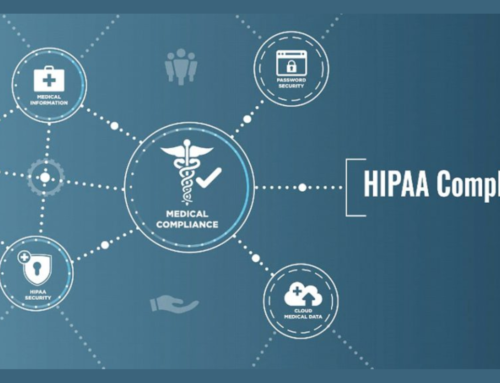Introduction to Customized Microsoft 365 Solutions
Customized Microsoft 365 Solutions play a pivotal role in empowering businesses to tailor their digital environments according to unique needs and preferences. Microsoft 365, a comprehensive suite of productivity tools, including popular applications such as Word, Excel, PowerPoint, Teams, and more, offers a high degree of flexibility through customization.
Definition of Microsoft 365 Customization:
Microsoft 365 customization refers to the process of adapting and fine-tuning the suite’s features and functionalities to align with specific business requirements. This goes beyond the standard out-of-the-box settings, allowing organizations to mold their digital workspace to enhance productivity, collaboration, and overall efficiency.
Scope of Customization:
The scope of Microsoft 365 customization is expansive, covering various aspects of the platform. From personalized user interfaces and templates to workflow automation and integration with third-party tools, businesses can tailor their Microsoft 365 experience at multiple levels. This customization extends to security settings, compliance measures, and the overall user experience.
In the realm of business solutions, the ability to customize Microsoft 365 is a strategic advantage. It enables organizations to address unique challenges, streamline processes, and create an environment that fosters innovation. The keyword-rich landscape of Microsoft 365, customization, and business solutions underscores the importance of tailoring this suite to meet the specific demands of different industries and enterprises.
Understanding the Core Components of Microsoft 365
Microsoft 365 stands as a comprehensive suite of applications designed to enhance productivity and collaboration within organizations. In this section, we will delve into the core components that form the backbone of Microsoft 365, providing an in-depth overview of essential applications such as Word, Excel, PowerPoint, Teams, and more. Additionally, we’ll explore the integration possibilities inherent in Microsoft 365 and the associated benefits.
Microsoft 365 Applications:
At the heart of Microsoft 365 are its versatile applications, each serving a unique purpose in the realm of productivity and communication.
- Word: The go-to word processing tool, facilitating document creation and editing.
- Excel: A powerful spreadsheet application for data analysis and visualization.
- PowerPoint: Ideal for creating visually engaging presentations.
- Teams: A unified communication and collaboration platform, fostering teamwork and communication.
These applications form a cohesive ecosystem that empowers users to create, edit, and collaborate on documents in real-time. The integration of these tools streamlines workflows and allows for seamless transitions between tasks, boosting overall productivity.
Integration Possibilities:
One of the key strengths of Microsoft 365 lies in its ability to integrate seamlessly with other applications and services, both within the Microsoft ecosystem and third-party solutions.
- Microsoft Ecosystem Integration: Microsoft 365 applications are designed to work cohesively with each other. For example, data from Excel can be effortlessly imported into Word, and PowerPoint presentations can be shared directly through Teams.
- Third-Party Integrations: Microsoft 365 offers a wide range of integrations with third-party tools and services, expanding its capabilities. This can include project management tools, CRM systems, and various industry-specific applications.
Benefits of Integration:
The integration of Microsoft 365 applications brings forth a myriad of benefits, enhancing the overall user experience and organizational efficiency.
- Streamlined Workflows: Integration reduces manual effort and enables a smoother flow of information between different tasks and applications.
- Enhanced Collaboration: Real-time collaboration features in Microsoft 365 applications, coupled with integration, foster a collaborative environment where teams can work together seamlessly.
- Increased Productivity: By reducing the need to switch between different tools and platforms, integration contributes to increased overall productivity.
The Business Case for Customization
In the dynamic landscape of modern business, customization stands out as a strategic imperative, particularly when applied to powerful suites like Microsoft 365. This section delves into the compelling business case for customization, addressing unique organizational needs, and examining the far-reaching impact on efficiency and competitive advantage.
Addressing Unique Business Needs through Customization:
No two businesses are identical, and recognizing this diversity is paramount. Microsoft 365 customization provides the flexibility to tailor the suite to the specific requirements of an organization. Whether it’s adapting default templates, creating bespoke workflows, or configuring security settings, customization empowers businesses to align their digital environment with unique processes and objectives.
By addressing these individualized needs, organizations can optimize their workflows, enhance user experience, and overcome challenges that generic solutions may not adequately meet. The keyword-rich landscape here centers on the direct application of customization in catering to the distinctive demands of different industries and enterprises.
Impact on Efficiency:
Efficiency is the lifeblood of successful businesses. Customizing Microsoft 365 allows organizations to optimize workflows, automate repetitive tasks, and create an environment that supports streamlined operations. Tailoring the suite to align with specific business processes minimizes friction in day-to-day activities, saving time and resources.
The benefits extend beyond individual tasks; the synergy of a finely tuned Microsoft 365 environment contributes to an overall increase in organizational efficiency. From document creation to project management, customization facilitates a seamless flow of information, reducing bottlenecks and enhancing collaboration.
Competitive Advantage:
In today’s competitive landscape, where innovation and adaptability are key differentiators, a customized Microsoft 365 solution can be a game-changer. By leveraging the suite’s flexibility to address unique challenges and opportunities, businesses position themselves ahead of the curve.
A bespoke Microsoft 365 environment can become a source of competitive advantage by enabling faster decision-making, quicker response to market changes, and a more agile approach to business challenges. The ability to adapt and customize digital tools demonstrates a commitment to efficiency and innovation, qualities that can set a business apart from its competitors.
Identifying Customization Opportunities
To harness the full potential of Microsoft 365 customization, businesses must embark on a journey of thorough assessment, understanding their organizational needs and pain points. This section delves into the crucial process of identifying customization opportunities, highlighting the significance of aligning customization initiatives with specific business requirements.
Assessing Organizational Needs and Pain Points:
The first step in the customization journey involves a comprehensive assessment of the organization’s existing workflows, processes, and pain points. This requires a deep dive into how teams collaborate, the challenges they encounter, and the inefficiencies that may be hindering optimal performance.
Conducting a customization assessment involves engaging with key stakeholders, from end-users to department heads, to gather insights into their daily operations. This qualitative understanding helps pinpoint areas where Microsoft 365 can be tailored to alleviate pain points and enhance overall efficiency.
Prioritizing Customization Based on Business Requirements:
Not all customization opportunities are equal, and prioritization is key to a successful implementation. Businesses need to align their customization efforts with overarching business requirements and strategic goals. This involves categorizing customization opportunities based on urgency, impact, and feasibility.
For example, if a particular department experiences bottlenecks in document approval processes, prioritizing customization in workflow automation within Microsoft 365 for that department can yield immediate efficiency gains. On the other hand, customizing templates for a more consistent branding approach across the organization may align with a long-term strategic goal.
By establishing a clear hierarchy of customization priorities, businesses can ensure that resources are allocated efficiently and that the customization efforts directly contribute to addressing critical business needs.
Available Customization Options
Microsoft 365 stands out not only for its robust set of out-of-the-box features but also for the extensive customization options it offers. This section provides an overview of the rich tapestry of customization features within Microsoft 365, emphasizing the tailoring possibilities for user interfaces, templates, and workflows.
Overview of Microsoft 365 Features:
Microsoft 365 is a versatile suite designed to cater to diverse organizational needs. Beyond its core applications like Word, Excel, and Teams, the platform provides a range of features that can be customized to suit specific requirements.
- Security Settings: Customize access controls, data encryption, and compliance measures to align with organizational security policies.
- Collaboration Tools: Tailor collaboration settings in Teams, SharePoint, and OneDrive to facilitate seamless teamwork, including file sharing permissions and project management features.
- Communication Channels: Customize communication channels within Teams to match the specific needs of different departments or project teams.
- User Permissions: Fine-tune user permissions across the suite, ensuring that individuals have access to the tools and data relevant to their roles.
Tailoring User Interfaces:
User interfaces play a crucial role in the overall user experience, and Microsoft 365 allows businesses to customize these interfaces to match specific preferences and workflows.
- Personalization: Users can personalize their interfaces by arranging tools and applications based on their workflows, ensuring quick access to frequently used features.
- Branding: Customize the appearance of Microsoft 365 applications to reflect organizational branding, creating a cohesive and professional look across the suite.
- Adaptive Cards: Tailor the layout and content of adaptive cards in Microsoft 365 applications, providing a personalized experience for end-users.
Customizing Templates:
Templates form the foundation for consistent and efficient document creation. Microsoft 365 empowers organizations to customize templates for various applications.
- Document Templates: Customize templates in Word, Excel, and PowerPoint to ensure brand consistency and streamline the creation of documents, spreadsheets, and presentations.
- Email Templates: Tailor email templates in Outlook to maintain a consistent tone and structure in communication.
- Project Templates: Create customized project templates in Microsoft Project, facilitating efficient project planning and execution.
Workflow Automation:
Microsoft 365 offers powerful tools for automating workflows, allowing businesses to streamline processes and reduce manual intervention.
- Power Automate: Create custom workflows using Power Automate, automating repetitive tasks and ensuring data consistency across applications.
- SharePoint Workflows: Customize workflows in SharePoint to automate document approval processes, project management tasks, and more.
- Task Automation in Teams: Leverage automation options within Teams to streamline task assignments, progress tracking, and notifications.
Integrating Third-Party Tools for Enhanced Functionality
Microsoft 365’s power lies not only in its standalone capabilities but also in its seamless integration with a plethora of third-party tools and services. In this section, we will explore the advantages of incorporating additional tools that complement Microsoft 365, enhancing overall functionality and streamlining workflows.
Exploring Additional Tools and Services:
Microsoft 365’s integration capabilities extend far beyond its native applications. Businesses can explore a wide range of third-party tools and services that seamlessly integrate with the platform. These tools cater to various needs, from project management and customer relationship management (CRM) to data analytics and collaboration.
- Project Management Tools: Integrate Microsoft 365 with project management tools like Asana, Trello, or Jira to enhance task management and project tracking capabilities.
- CRM Systems: Connect Microsoft 365 with CRM systems such as Salesforce or HubSpot to streamline customer interactions, data management, and sales processes.
- Analytics Platforms: Integrate with analytics tools like Power BI for advanced data visualization and analysis, unlocking deeper insights from Microsoft 365 data.
Streamlining Workflows through Seamless Integration:
The true power of integrating third-party tools with Microsoft 365 lies in the ability to create cohesive and streamlined workflows. By eliminating silos and ensuring smooth data flow between applications, businesses can optimize processes and enhance overall efficiency.
- Automated Data Sync: Ensure that data seamlessly syncs between Microsoft 365 and third-party tools, preventing data silos and maintaining consistency.
- Unified Communication: Integrate communication tools like Slack or Zoom with Microsoft Teams to consolidate communication channels and foster collaboration.
- Single Sign-On (SSO): Implement SSO solutions to enable users to access both Microsoft 365 and integrated third-party tools with a single set of credentials, simplifying user management.
Ensuring Security and Compliance in Customized Setups
As organizations tailor Microsoft 365 to meet their unique needs, the paramount concern is ensuring robust security measures and compliance with industry regulations. This section delves into strategies for maintaining data security in customized Microsoft 365 solutions and emphasizes the importance of adhering to industry standards.
Strategies for Maintaining Data Security:
Customization should never compromise the security of sensitive data within Microsoft 365. To fortify the digital environment, organizations can implement a range of strategies tailored to their specific requirements.
- Access Controls: Define and customize user permissions within Microsoft 365 to restrict access to sensitive information, ensuring that only authorized individuals can view or modify data.
- Encryption: Employ encryption protocols to protect data both in transit and at rest, adding an extra layer of security to prevent unauthorized access.
- Multi-Factor Authentication (MFA): Enhance login security by implementing MFA, requiring users to verify their identity through multiple authentication methods.
- Audit Trails: Enable and customize audit trails to track user activities within Microsoft 365, providing a comprehensive overview of who accessed what information and when.
Compliance with Industry Regulations and Standards:
In an era of increasing data privacy concerns, compliance with industry regulations is non-negotiable. Customized Microsoft 365 solutions must align with the regulatory landscape to avoid legal repercussions and protect sensitive information.
- GDPR (General Data Protection Regulation): Customize Microsoft 365 to comply with GDPR requirements, ensuring the protection of personal data and the right to privacy for individuals.
- HIPAA (Health Insurance Portability and Accountability Act): Customize security settings and access controls to meet HIPAA standards in healthcare organizations, safeguarding patient information.
- ISO Standards: Align Microsoft 365 customization with relevant ISO standards such as ISO/IEC 27001 for information security management.
- Industry-Specific Regulations: Tailor security measures to meet industry-specific regulations, whether in finance, legal, or other sectors, to address specific compliance requirements.
Case Studies: Real-World Success Stories
In the realm of Microsoft 365 customization, real-world success stories illuminate the transformative power of tailoring the suite to meet specific business needs. This section provides a detailed examination of businesses that have successfully benefited from customization, offering valuable lessons learned and best practices for organizations embarking on a similar journey.
Business A: Streamlining Collaboration with Customized Teams Integration
Business A, a multinational corporation with dispersed teams, sought to enhance collaboration and communication. Through a tailored Microsoft 365 solution, they customized Teams integration with third-party project management tools. This integration streamlined communication channels, allowing teams to seamlessly collaborate on projects within the familiar Teams interface. The result was a significant reduction in email clutter, improved project visibility, and faster decision-making.
Lessons Learned:
- User Involvement is Key: Involving end-users in the customization process ensured that the solution met their actual needs and preferences.
- Gradual Rollout: Business A adopted a phased approach to implementation, allowing teams to acclimate gradually, minimizing disruptions.
Best Practices:
- Customization Roadmap: Create a clear roadmap outlining the customization process, ensuring alignment with organizational goals.
- Training and Support: Provide comprehensive training and ongoing support to users to maximize adoption and utilization.
Business B: Boosting Productivity Through Workflow Automation
Business B, a medium-sized manufacturing company, aimed to optimize internal processes and reduce manual tasks. Leveraging Microsoft 365’s Power Automate, they automated procurement workflows, from purchase requests to order approvals. This not only accelerated procurement processes but also reduced errors and improved data accuracy.
Lessons Learned:
- Continuous Monitoring: Regularly monitor and assess automated workflows to identify areas for improvement and ensure ongoing efficiency gains.
- Feedback Loops: Establish mechanisms for gathering feedback from users to refine and enhance automated processes.
Best Practices:
- Cross-Department Collaboration: Engage multiple departments in the customization process to identify interconnected processes that can benefit from automation.
- Data Security Measures: Implement robust security measures to safeguard sensitive information involved in automated workflows.
Business C: Customizing Templates for Consistent Branding
In the highly competitive marketing industry, Business C recognized the importance of maintaining consistent branding across client deliverables. Customizing document templates in Word and PowerPoint within Microsoft 365 ensured a unified and professional brand image in all client communications. This not only enhanced client perception but also streamlined content creation processes.
Lessons Learned:
- Regular Updates: Periodically review and update templates to align with evolving branding guidelines and industry trends.
- User Training: Provide training to ensure that all team members are aware of and consistently use the customized templates.
Best Practices:
- Branding Guidelines Integration: Embed branding guidelines directly into customized templates for easy reference and adherence.
- Version Control: Implement version control mechanisms to track changes and maintain the integrity of branded templates.
Anticipating Future Trends in Microsoft 365 Customization
As technology evolves, so too does the landscape of Microsoft 365 customization. Keeping a keen eye on emerging technologies and features within the suite offers insights into the future of customization options. Here, we delve into anticipated future trends that are poised to shape the evolution of Microsoft 365 customization.
Emerging Technologies and Features:
Microsoft is at the forefront of integrating cutting-edge technologies into its suite. Features such as artificial intelligence (AI), machine learning (ML), and augmented reality (AR) are becoming integral components of Microsoft 365. These technologies not only enhance user experiences but also open up new possibilities for customization. Imagine AI-driven personalization of user interfaces or ML algorithms optimizing workflows based on historical usage patterns.
Predictions for the Future of Customization Options:
The future of Microsoft 365 customization promises even greater flexibility and adaptability. Predictive customization, informed by data analytics and user behavior, may become a standard feature. Enhanced integration capabilities with emerging third-party tools and services will provide businesses with a more extensive toolkit for tailoring their digital environments.
Additionally, Microsoft is likely to continue expanding its low-code and no-code development options, empowering users with limited coding expertise to create sophisticated custom solutions. The evolution of customization options may also involve deeper integration with the Microsoft Power Platform, enabling businesses to build custom applications seamlessly integrated with Microsoft 365.
Conclusion
In the ever-evolving landscape of digital transformation, customized Microsoft 365 solutions emerge as a catalyst for organizational success. The journey through this exploration has shed light on the myriad benefits of customization, offering businesses the tools to tailor their digital environments to specific needs and preferences.
Customization Benefits:
The customization of Microsoft 365 empowers organizations to address unique business needs, optimize workflows, and enhance overall efficiency. From tailoring user interfaces to automating complex workflows, the benefits are vast and impactful. Streamlined collaboration, boosted productivity, and a competitive edge are just a few outcomes of judicious customization.
Explore Opportunities:
As we conclude, the call to action is clear — explore the vast opportunities that customization within Microsoft 365 presents. Whether you’re aiming to streamline communication, automate processes, or align with industry regulations, the suite provides a robust foundation for tailored solutions.
By understanding the lessons learned from real-world case studies, embracing best practices, and anticipating future trends, businesses can embark on a customization journey that not only meets current needs but also positions them strategically for the future.
In the dynamic landscape of digital workspaces, customization is not a one-time endeavor but an ongoing strategy to adapt to evolving challenges and opportunities. So, explore the potential, unlock the benefits, and tailor your Microsoft 365 solution to propel your organization towards greater efficiency, collaboration, and success in the digital era.









